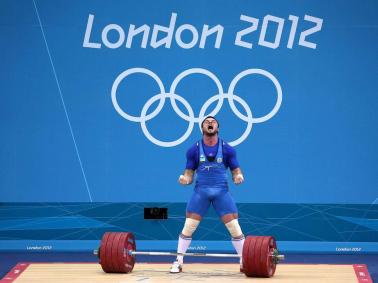Five Weightlifters Test Positive for Oral Turinabol from 2012 London Olympic Games
Five Weightlifters Test Positive for Oral Turinabol | steroid.com
Two Olympic gold medalist and one Olympic bronze medalist could lose their medals as a result of the retroactive steroid positives.
Five Olympic weightlifting athletes have tested positive for the very same anabolic steroid in connection with the 2012 Summer Olympic Games in London. The potential anti-doping violations were discovered as part of the ongoing re-analysis program conducted by the International Olympic Committee (IOC).
 The five steroid positives affected two Olympic gold medalists – Oleksiy Torokhtiy of Ukraine and Ruslan Nurudinov of Uzbekistan. Torokhtiy won the gold medal in the men’s 105-kilogram weight category at the 2012 London Olympics. Nurudinov won the gold medal in the men’s 105-kilogram weight category at the 2016 Rio de Janeiro Olympics.
The five steroid positives affected two Olympic gold medalists – Oleksiy Torokhtiy of Ukraine and Ruslan Nurudinov of Uzbekistan. Torokhtiy won the gold medal in the men’s 105-kilogram weight category at the 2012 London Olympics. Nurudinov won the gold medal in the men’s 105-kilogram weight category at the 2016 Rio de Janeiro Olympics.
The other three weightlifters who tested positive for anabolic steroids included Valentin Hristov of Azerbaijan, Meline Daluzyan of Armenia and Mikalai Novikau of Belarus. Hristov won the bronze medal in the 56-kilogram weight category at the London Olympics.
Oral Turinabol and Winstrol are responsible for the most steroid positives in the IOC re-analysis program.
All five Olympic weightlifters were using dehydrochlormethyltestosterone (DHCMT). The steroid is more commonly known as Oral Turinabol among athletes and bodybuilders. Two of the weightlifters – Daluzyan and Novikau – were also using the anabolic steriod stanozolol (Winstrol).
The 2012 London Olympics has had far more anti-doping rule violations (ADRVs) than any other Olympic Games in history. The total number of ADRVs currently stands at 116. Most of those London ADRVs were identified in connection with the IOC re-analysis program.
The IOC re-analysis program has been such a tremendous success. The reason for that success can be attributed to a more sophisticated anti-doping detection technique that identifies long-acting metabolites of DHCMT and stanozolol.
The Russian scientist Grigory Rodchenkov created this new steroid detection method. It increases the window of detection from a few days to as long as six months according to Rodchenkov. However, recent anti-doping cases have suggested that the window of detection could be much longer.
The United States Anti-Doing Agency (USADA) asserted that the window of detection could be well over 18 months. USADA concluded this was a likely explanation for a steroid positive in the case of former two-time UFC light-heavyweight champion Jon Jones.
Jones tested positive for long-acting metabolites of Oral Turinabol in December 2018. However, USADA believes he last ingested the anabolic steroid prior to the summer of 2017. UFC Vice President of Athlete Health and Performance Jeff Novitzky has even suggested that DHCMT metabolites could remain in the system “forever.”
Source:
Associated Press. (December 24, 2018). 2 Olympic champions suspended for doping after 2012 retests. Retrieved from cbc.ca/sports/olympics/weightlifters-suspended-doping-1.4958094



 The five steroid positives affected two Olympic gold medalists – Oleksiy Torokhtiy of Ukraine and Ruslan Nurudinov of Uzbekistan. Torokhtiy won the gold medal in the men’s 105-kilogram weight category at the 2012 London Olympics. Nurudinov won the gold medal in the men’s 105-kilogram weight category at the 2016 Rio de Janeiro Olympics.
The five steroid positives affected two Olympic gold medalists – Oleksiy Torokhtiy of Ukraine and Ruslan Nurudinov of Uzbekistan. Torokhtiy won the gold medal in the men’s 105-kilogram weight category at the 2012 London Olympics. Nurudinov won the gold medal in the men’s 105-kilogram weight category at the 2016 Rio de Janeiro Olympics.